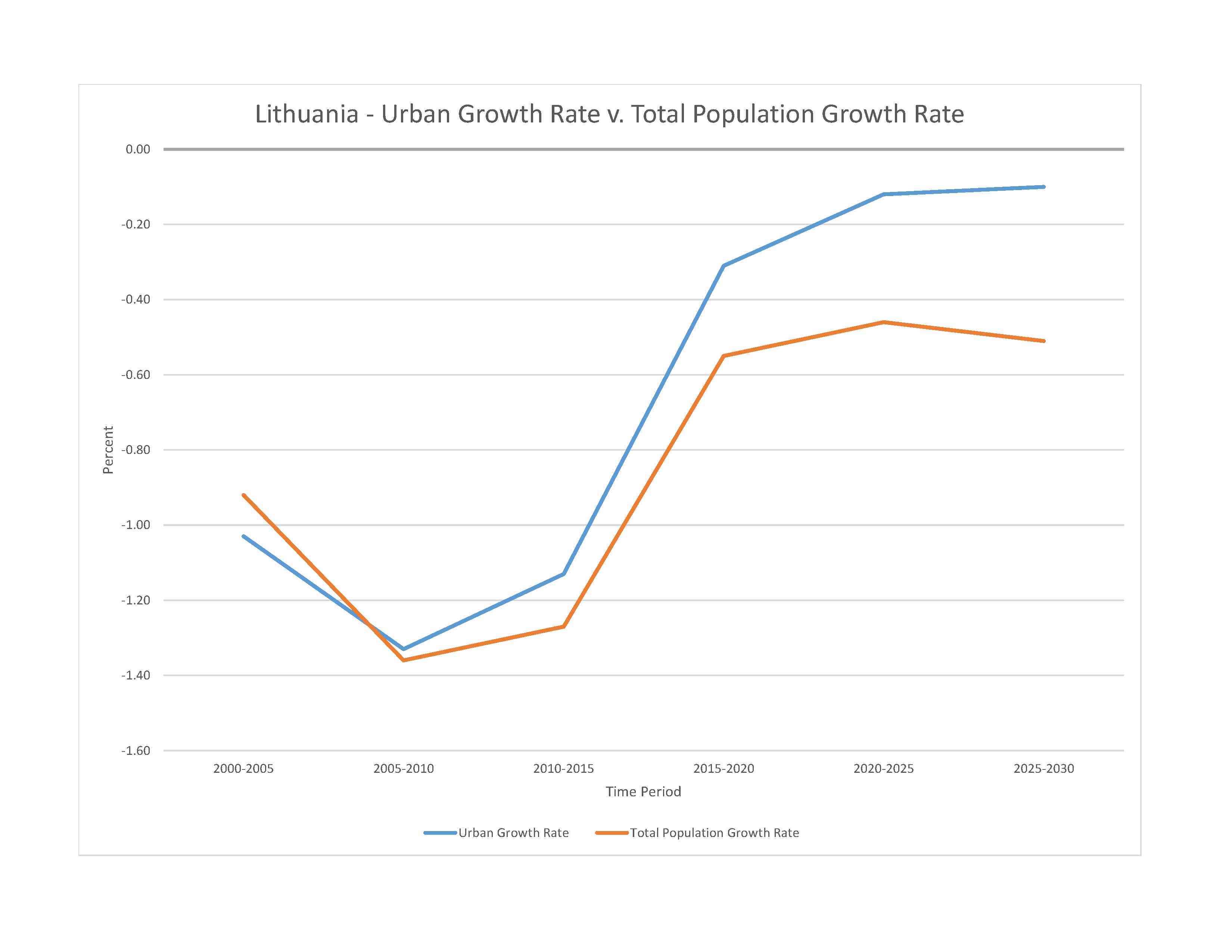
2,655,755 (2023 est.)
noun: Lithuanian(s)
adjective: Lithuanian
Lithuanian 84.6%, Polish 6.5%, Russian 5%, Belarusian 1%, other 1.1%, unspecified 1.8% (2021 est.)
Lithuanian (official) 85.3%, Russian 6.8%, Polish 5.1%, other 1.1%, two mother tongues 1.7% (2021 est.)
major-language sample(s):
Pasaulio enciklopedija – naudingas bendrosios informacijos šaltinis. (Lithuanian)
The World Factbook, the indispensable source for basic information.
Roman Catholic 74.2%, Russian Orthodox 3.7%, Old Believer 0.6%, Evangelical Lutheran 0.6%, Evangelical Reformist 0.2%, other (including Sunni Muslim, Jewish, Greek Catholic, and Karaite) 0.9%, none 6.1%, unspecified 13.7% (2021 est.)
0-14 years: 15.3% (male 208,669/female 197,728)
15-64 years: 63.11% (male 821,319/female 854,763)
65 years and over: 21.59% (2023 est.) (male 197,217/female 376,059)
total dependency ratio: 55.7
youth dependency ratio: 23.6
elderly dependency ratio: 32.1
potential support ratio: 3.1 (2021 est.)
total: 45 years (2023 est.)
male: 40.6 years
female: 49 years
-1.04% (2023 est.)
9.1 births/1,000 population (2023 est.)
15.2 deaths/1,000 population (2023 est.)
-4.3 migrant(s)/1,000 population (2023 est.)
fairly even population distribution throughout the country, but somewhat greater concentrations in the southern cities of Vilnius and Kaunas, and the western port of Klaipeda
urban population: 68.7% of total population (2023)
rate of urbanization: -0.12% annual rate of change (2020-25 est.)

541,000 VILNIUS (capital) (2023)
at birth: 1.06 male(s)/female
0-14 years: 1.06 male(s)/female
15-64 years: 0.96 male(s)/female
65 years and over: 0.52 male(s)/female
total population: 0.86 male(s)/female (2023 est.)
28.2 years (2020 est.)
9 deaths/100,000 live births (2020 est.)
total: 3.6 deaths/1,000 live births (2023 est.)
male: 4.1 deaths/1,000 live births
female: 3.1 deaths/1,000 live births
total population: 76 years (2023 est.)
male: 70.6 years
female: 81.6 years
1.61 children born/woman (2023 est.)
0.78 (2023 est.)
N/A
improved: urban: 100% of population
rural: 93.8% of population
total: 98% of population
unimproved: urban: 0% of population
rural: 6.2% of population
total: 2% of population (2020 est.)
7.5% of GDP (2020)
5.08 physicians/1,000 population (2020)
6.4 beds/1,000 population (2018)
improved: urban: 99.5% of population
rural: 88.7% of population
total: 96% of population
unimproved: urban: 0.5% of population
rural: 11.3% of population
total: 4% of population (2020 est.)
degree of risk: intermediate (2023)
vectorborne diseases: tickborne encephalitis
26.3% (2016)
total: 11.93 liters of pure alcohol (2019 est.)
beer: 4.61 liters of pure alcohol (2019 est.)
wine: 0.88 liters of pure alcohol (2019 est.)
spirits: 4.96 liters of pure alcohol (2019 est.)
other alcohols: 1.48 liters of pure alcohol (2019 est.)
total: 32% (2020 est.)
male: 42.1% (2020 est.)
female: 21.8% (2020 est.)
2.5% (2021) NA
53.4% (2023 est.)
women married by age 18: 0.3% (2021 est.)
4% of GDP (2019 est.)
definition: age 15 and over can read and write
total population: 99.8%
male: 99.8%
female: 99.8% (2021)
total: 16 years
male: 16 years
female: 17 years (2020)
NOTE: The information regarding Lithuania on this page is re-published from the 2024 World Fact Book of the United States Central Intelligence Agency and other sources. No claims are made regarding the accuracy of Lithuania 2024 information contained here. All suggestions for corrections of any errors about Lithuania 2024 should be addressed to the CIA or the source cited on each page.
This page was last modified 04 May 24, Copyright © 2024 ITA all rights reserved.